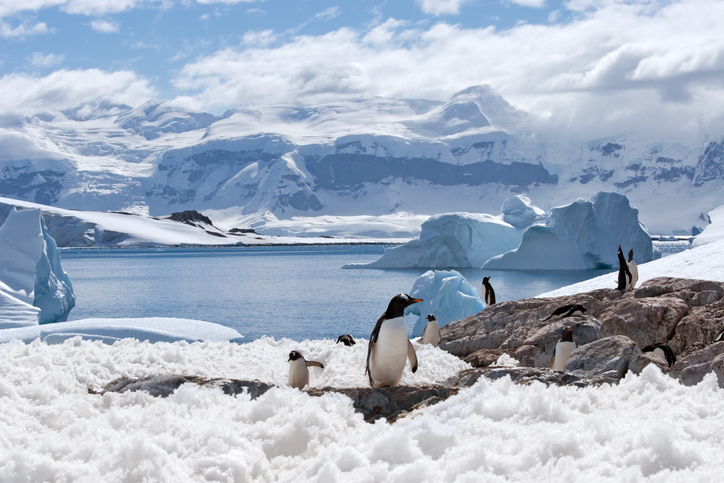Here’s a taste of what life is like on the bottom of the world.
Least populated
Of the seven continents, Antarctica is the least populated, but the fifth largest. It’s bigger than Australia and all of Europe.
Not one landmass
Antarctica isn’t one singular landmass. In addition to its mainland, it also encompasses the South Orkney Islands, South Georgia, South Shetland Islands, and the South Sandwich Islands. (Those are all the domain of the United Kingdom.) Norway lays claim to Peter I Island and Bouvet Island, while Australia owns Heard Island and McDonald Island. New Zealand’s area includes Scott Island and the Balleny Islands.
Penguins!
With the exception of a few, isolated colonies in the southernmost parts of New Zealand, Chile, and South Africa, Antarctica is the only place in the world where penguins roam free. (Most of the world’s penguins live in Antarctica.)
Climate change update
Due to rising temperatures associated with climate change, in 2004, the U.K. scientist leading research into global warming, Sir David King, said that one day, “Antarctica will soon be the only place to live.”
What grows there?
It’s so cold in Antarctica that there is little natural vegetation. Trees and bushes can’t thrive there, but moss, algae, and lichen can.
What animal doesn’t live there?
Rats! Antarctica is the only place in the world where you wouldn’t find any.
No permanent residents
There are no peoples native to Antarctica, owing to the cold that only be escaped via modern housing and heating technologies. There are no permanent residents either, only rotating groups of scientists and researchers.
Space rocks
Among the things that scientists study in Antarctica: the many meteorites that have landed there. The number of space rocks that came to rest there is equal to the number that hit the rest of the planet put together. They’re apparently very easy to spot on the vast expanses of white ice.
Kind of like Mars
NASA has sent scientists to the icy continent to test robotic probes and life in space. Antarctica is technically a desert, and it makes for a nice approximation of the surface of Mars. The agency can also learn about the effect of a low-sun or sun-free existence on astronauts who may similarly find themselves far from the sun’s warming glow.








